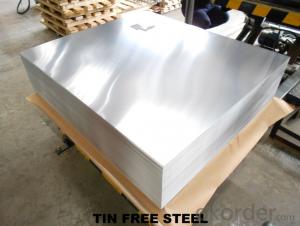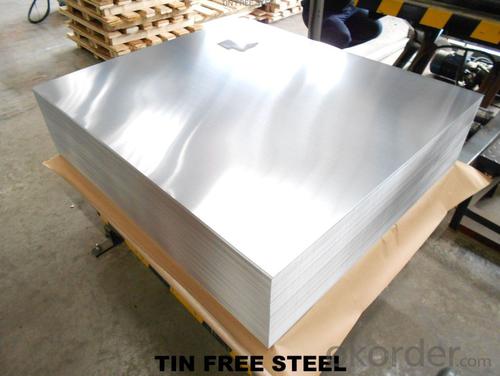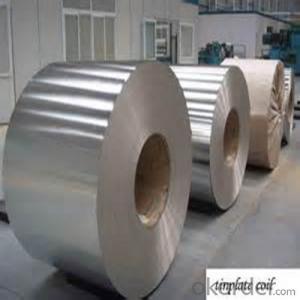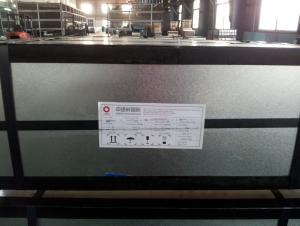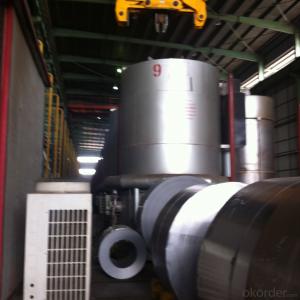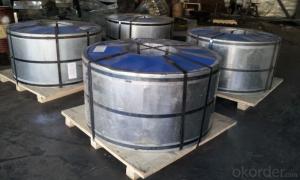tin free steel
- Loading Port:
- China Main Port
- Payment Terms:
- TT OR LC
- Min Order Qty:
- -
- Supply Capability:
- -
OKorder Service Pledge
Quality Product, Order Online Tracking, Timely Delivery
OKorder Financial Service
Credit Rating, Credit Services, Credit Purchasing
You Might Also Like
Quick Details
Standard: GB,JIS
Grade: MR.SPCC
Width: 520~950mm
Thickness: 0.15~0.36mm
Hardness: T2~DR9/BA
Place of Origin: Jiangsu, China (Mainland)
Brand Name: HeFeng
Type: Tinplate Coil/sheets
Application: Food Cans Industrial Cans
Thickness tolerance: +/-0.005mm
Application:
Widely used for food grade metal packaging industry and cable industry.
Such as making cans cover for food and beverage,crown cork,bottle caps, rotating cover,optical fiber ribbon and other purpose.
- Q: How can recycled tin cans be recycled?
- The broken material is separated by the air whirling sorting system, and the metal and nonmetal are separated from each other. Moreover, the whole system is equipped with a dust removing device to minimize the damage caused by dust pollution in the process of production.Tin tins, crushing machines, equipment and maintenance costs are low: equipment design is reasonable, well made, extending the service life of equipment, reducing the use and maintenance costs of equipment.
- Q: Can tinplate be used for marine applications?
- Yes, tinplate can be used for marine applications. Tinplate is known for its excellent corrosion resistance, making it a suitable material for marine environments where exposure to saltwater and moisture is a concern. Additionally, tinplate's strength and durability make it ideal for various marine applications such as packaging, containers, and components for boats and ships.
- Q: What are the printing options for tinplate?
- The printing options for tinplate include lithography, digital printing, screen printing, and offset printing.
- Q: How does the tin coating affect the weldability of tinplate?
- The tin coating on tinplate improves its weldability by providing a protective barrier that prevents oxidation and contamination during the welding process. This coating acts as a lubricant, reducing friction and allowing for smoother welds. Additionally, the tin coating helps to ensure a strong and durable weld joint, enhancing the overall weldability of tinplate.
- Q: How does tinplate affect the overall product shelf appeal?
- Tinplate enhances the overall product shelf appeal by providing a visually appealing and premium packaging solution. Its shiny and reflective surface adds a touch of sophistication and attractiveness, catching the attention of consumers. Additionally, tinplate's durability and strength protect the product, ensuring it remains intact and visually appealing throughout its shelf life.
- Q: What are the benefits of using tinplate for kitchenware?
- The benefits of using tinplate for kitchenware include its durability, resistance to corrosion, easy maintenance, and ability to preserve food quality. Tinplate is also lightweight, making it convenient for everyday use in the kitchen.
- Q: Can tinplate be used for furniture?
- Yes, tinplate can be used for certain types of furniture, particularly for creating decorative elements or accents. However, it is not commonly used as the primary material for furniture due to its relatively low strength and durability compared to other metals like steel or aluminum.
- Q: How does tinplate perform in terms of fire resistance?
- Tinplate has poor fire resistance as it is made of thin steel coated with a layer of tin, which can easily melt or deform under high temperatures, making it susceptible to fire.
- Q: Can tinplate be used for non-packaging applications?
- Yes, tinplate can be used for non-packaging applications. Tinplate's properties such as durability, corrosion resistance, and versatility make it suitable for various non-packaging uses such as automotive parts, electrical components, construction materials, and more.
- Q: What are the common safety features for tinplate packaging?
- Some common safety features for tinplate packaging include tamper-evident seals, child-resistant closures, and durable construction to prevent breakage or leakage. Additionally, many tinplate packaging products are also made with food-grade materials to ensure the safety of the contents.
Send your message to us
tin free steel
- Loading Port:
- China Main Port
- Payment Terms:
- TT OR LC
- Min Order Qty:
- -
- Supply Capability:
- -
OKorder Service Pledge
Quality Product, Order Online Tracking, Timely Delivery
OKorder Financial Service
Credit Rating, Credit Services, Credit Purchasing
Similar products
Hot products
Hot Searches
Related keywords
